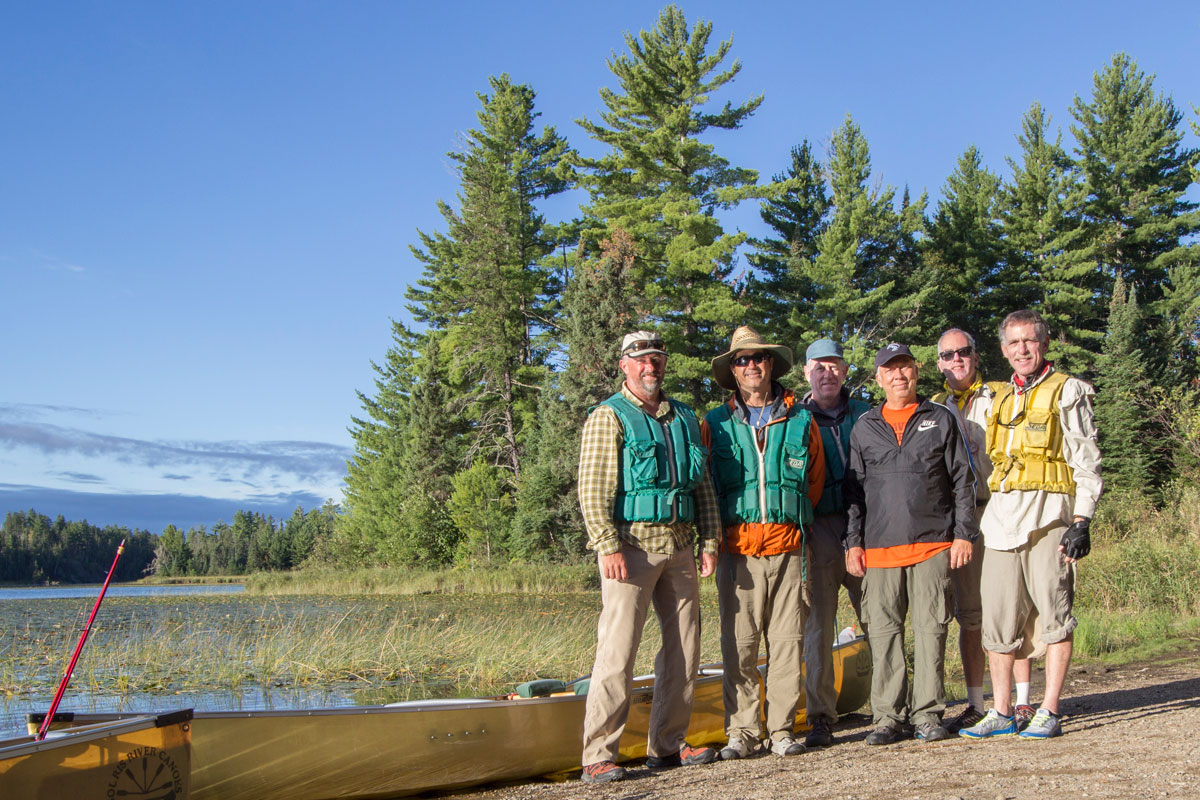
In September of 2013 some friends and I spent six days paddling the Boundary Waters Canoe Area. This area is at the boundary of The US and Canada and is dense with lakes. A typical trip consists of paddling through each lake and in most cases portaging — or carrying — the canoe and all of the gear over a stretch of land to the next lake. Portages can be very short but some are longer. Motorized boats are not allowed and in general this area is pretty devoid of humans. I can honestly say I have wanted to visit this place since I was a kid. My scout troop was a canoe-centric troop in South Florida and we were well aware of this canoeing paradise.

We had arranged for canoes and packs with LaTourell’s Outfitters outside of Ely, MN. We planned to spend one night at LaTourell’s resort area in a cabin, and then launch from entry point 30 — Lake One. We asked about a pick up at entry point 25 a week later and were surprised to find that LaTourells is actually at point 25. That ended up being very convenient but I can’t say our year of planning is to thank for this coincidence. The weather when we arrived was perfect — warm and fairly calm.
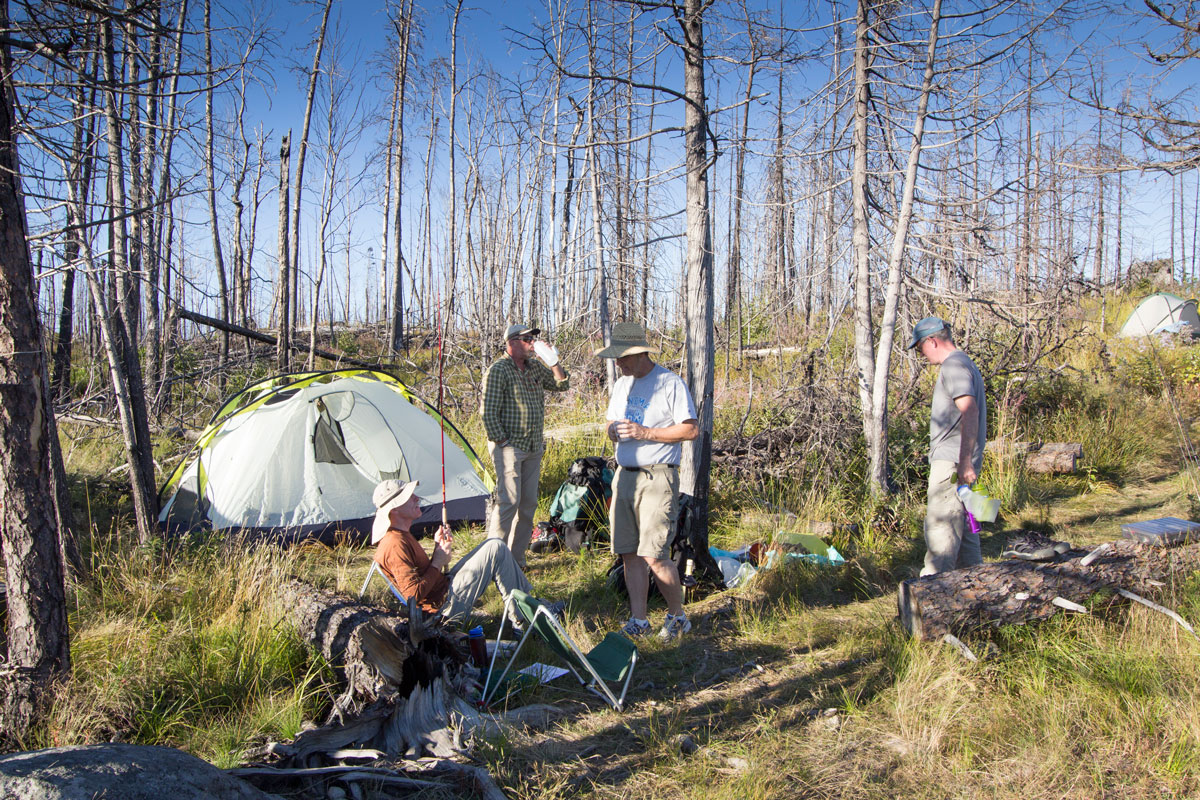
The first day of paddling offered beautiful conditions, but I was disappointed to see that there were many people in the park. As we started to look for a campsite late in the day, we were finding that every site was occupied. Eventally we ended up in an area that had been badly burned a few years back, and we found that fewer people were there.
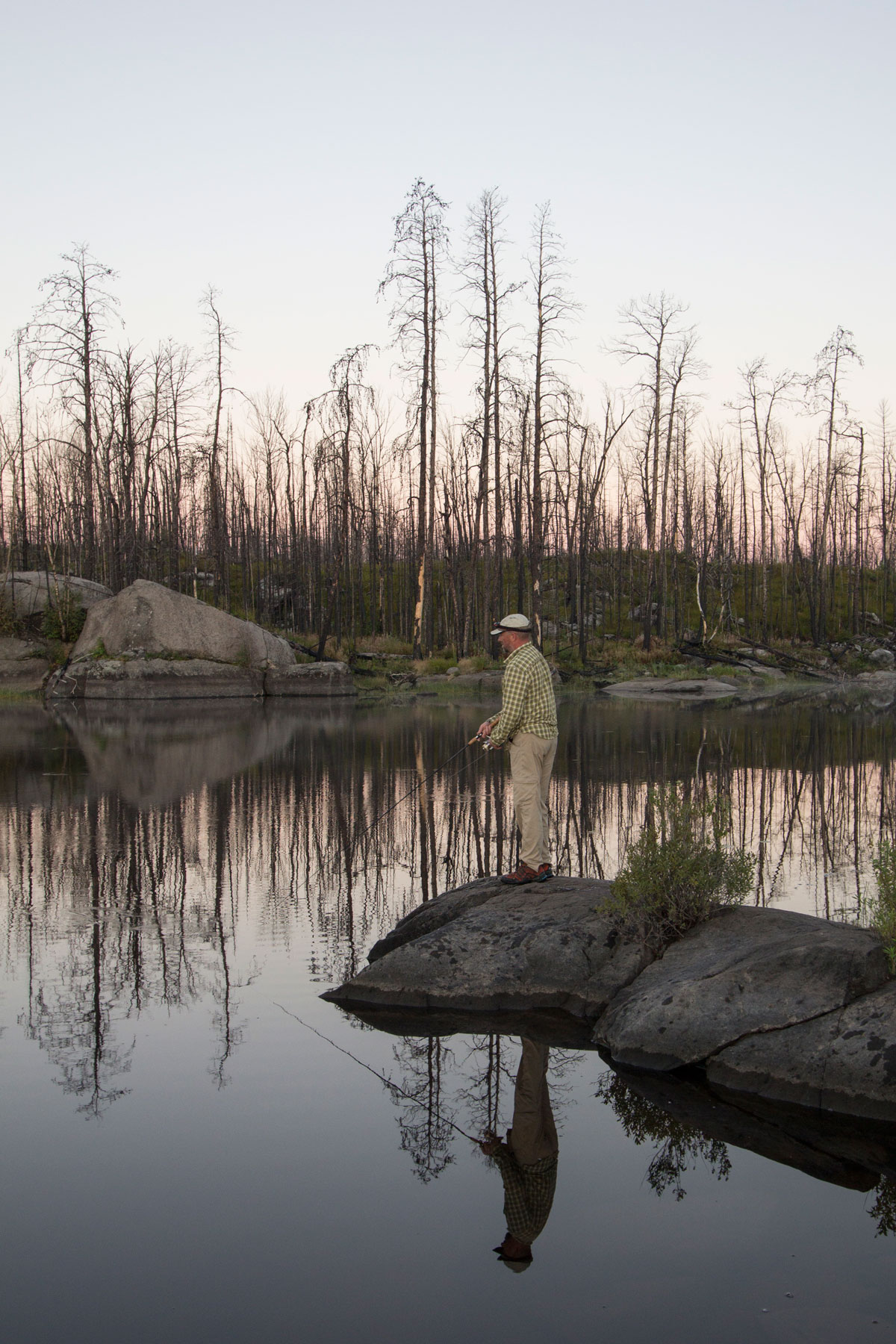 While our camp in the burned area was not exactly what I had in mind, it was beautiful it its own way. In particular the quiet of the area was almost startling — it was one of the most silent places I have ever been.
While our camp in the burned area was not exactly what I had in mind, it was beautiful it its own way. In particular the quiet of the area was almost startling — it was one of the most silent places I have ever been.

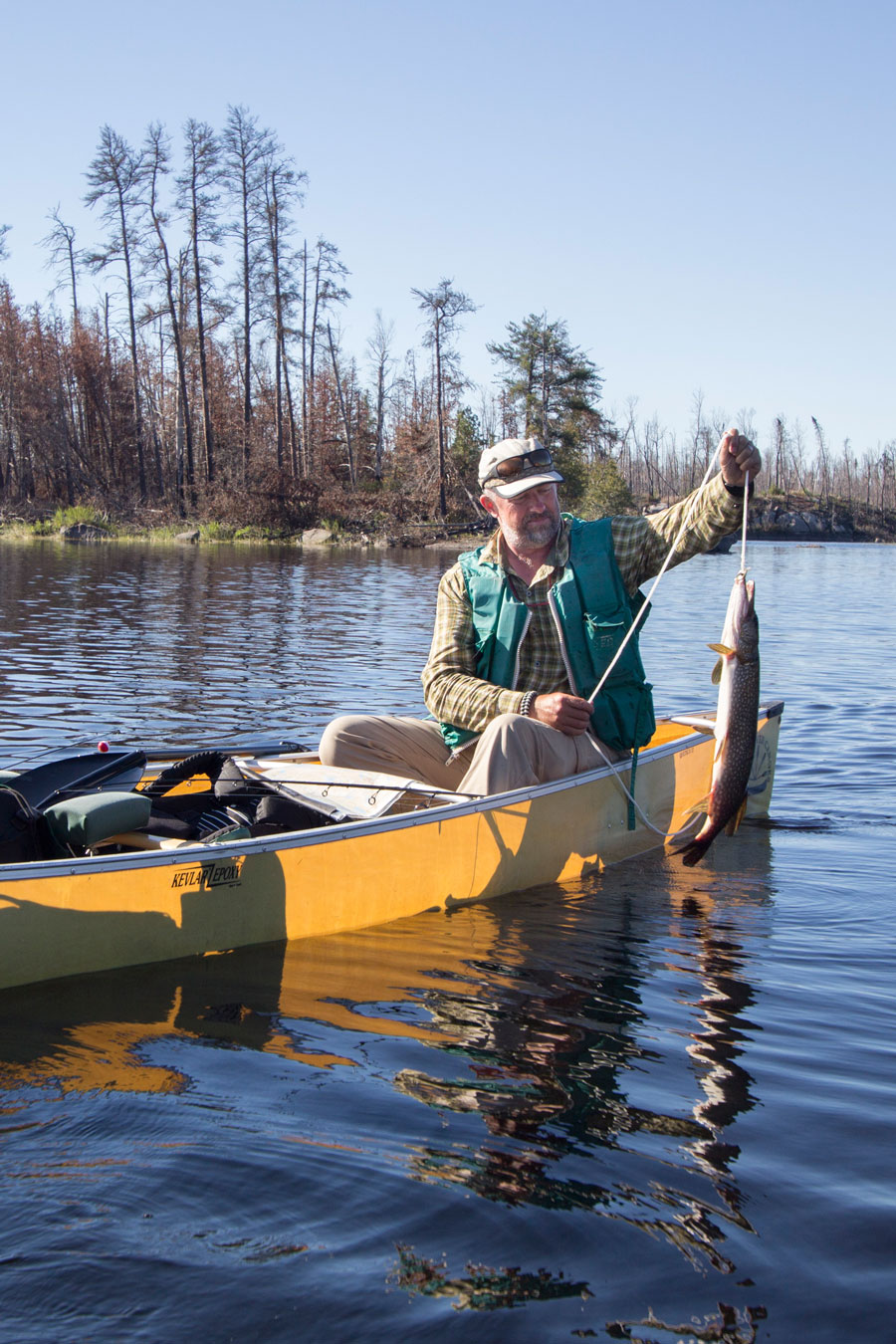
All but one of us had purchased fishing licenses for the week. It was in the burn zone that we had our first luck — a Northern Pike. Leaving the burn area we had a long portage and we were happy to find that few people were on the other side of the portage. It appears that many people enter the BWCA but most set up camp near an entry point. Once we were past the first hard portage we saw very few other people.
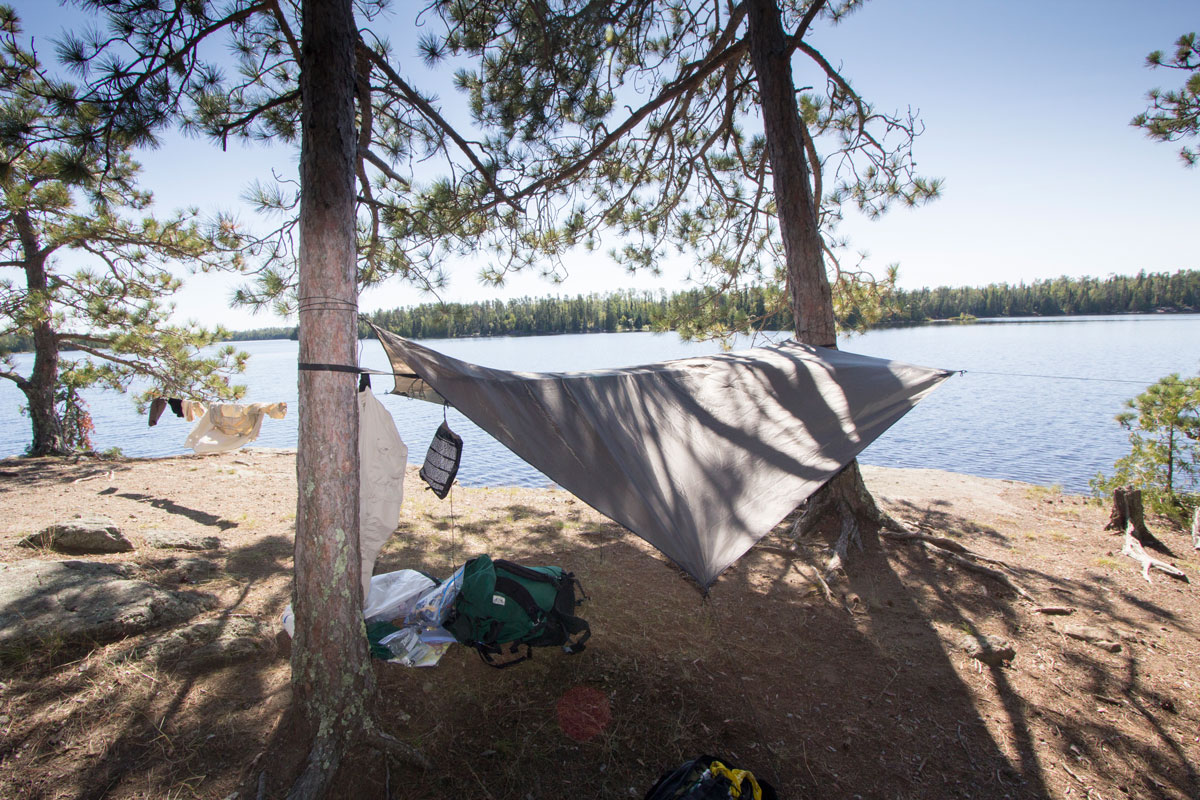
On our second day in the BWCA we found our best campsite, one of the best sites I have ever seen. It looks like a lone red dot on the map — a campsite on a small island in the middle of a lake. It was fantastic, with multiple great spots for tents (and my hammock), several great swimming spots and amazing views in all directions. We immediately decided that our only 2-night stay would be at this wonderful camp. This was Williamson Island.
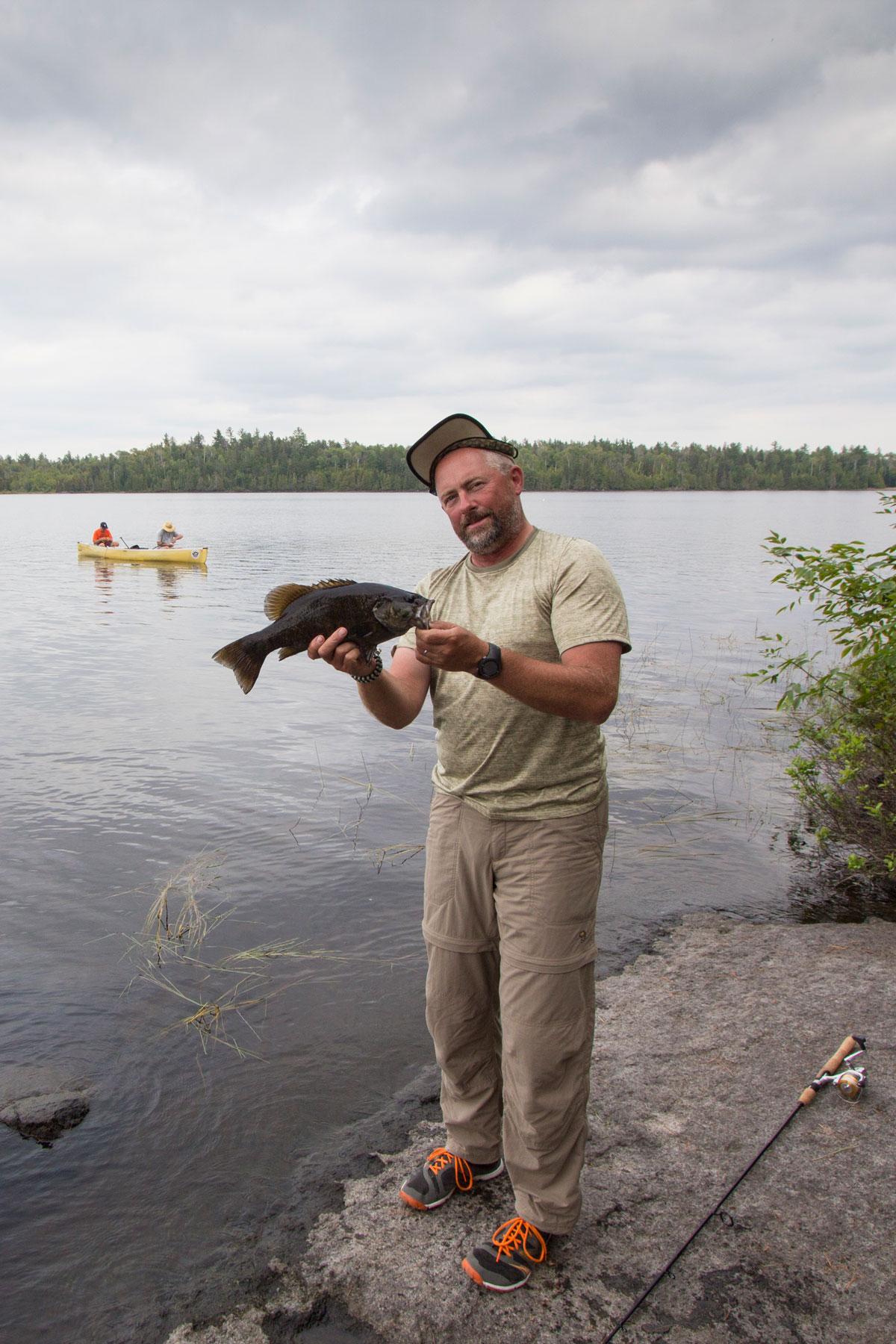
Our second day on Williamson Island provided a fishing bonanza. All of us caught fish and we had more than enough for dinner after letting many fish go. The afternoon we spent fishing — mostly right from the shore — was the kind of afternoon that makes me keep doing these outings. Totally natural and beautiful surroundings with good friends — the fishing was a bonus.

We prepared three types of fish — Walleye, Northern Pike, and Smallmouth Bass — and we had three different preparations — Almondine, Beer Battered, and Grilled with Butter. This dinner may have been the best seafood meal I have ever had. Yes I know this lake was not technically the sea.
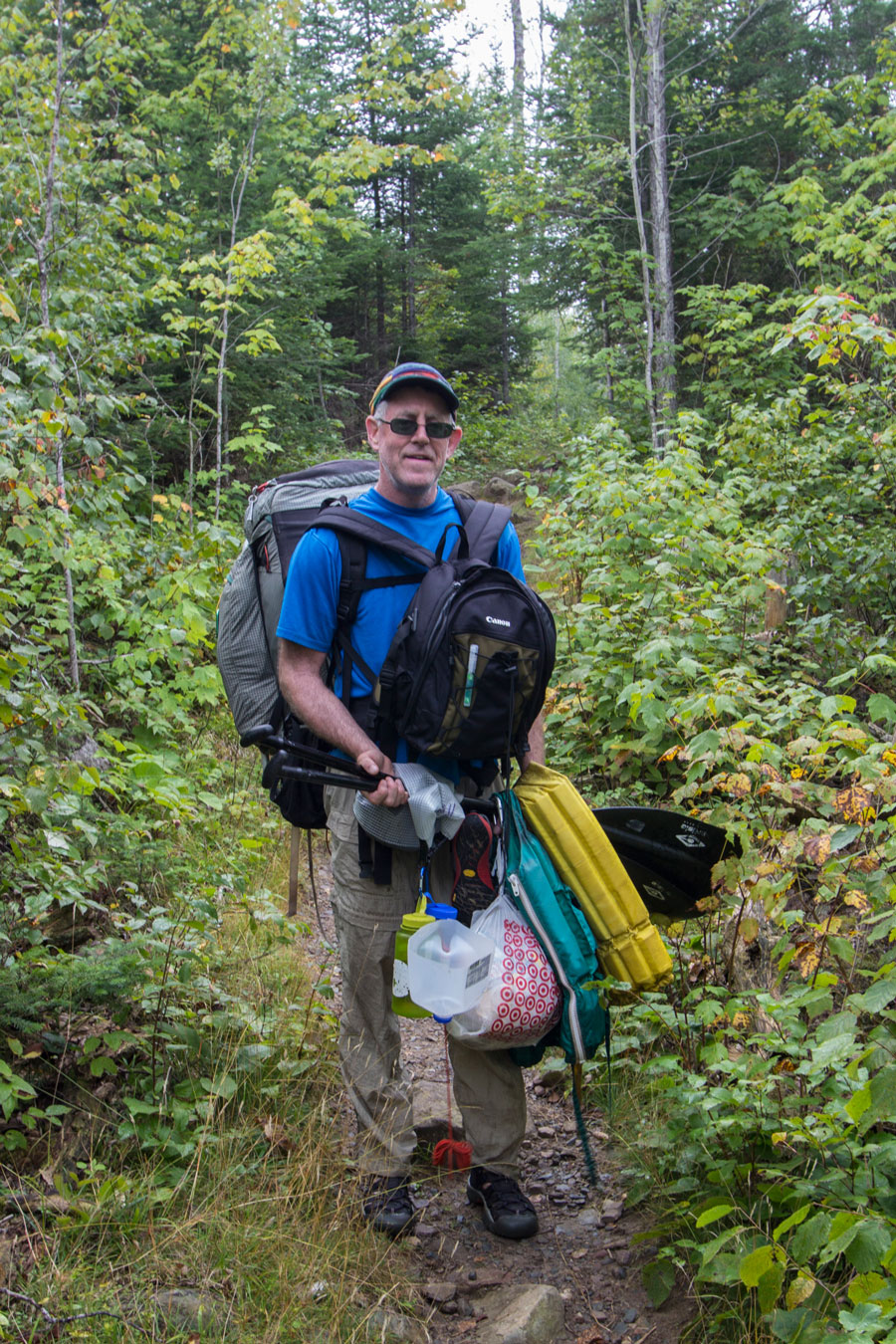
Portaging is a fact of travel in the BWCA. As I mentioned, it keeps the crowds down and for that reason only I like it. Otherwise though it is a real pain. For longer portages generally one person carries the canoe on his head, along with a pack. The second person carries everything else. Here is my friend carrying everything else.
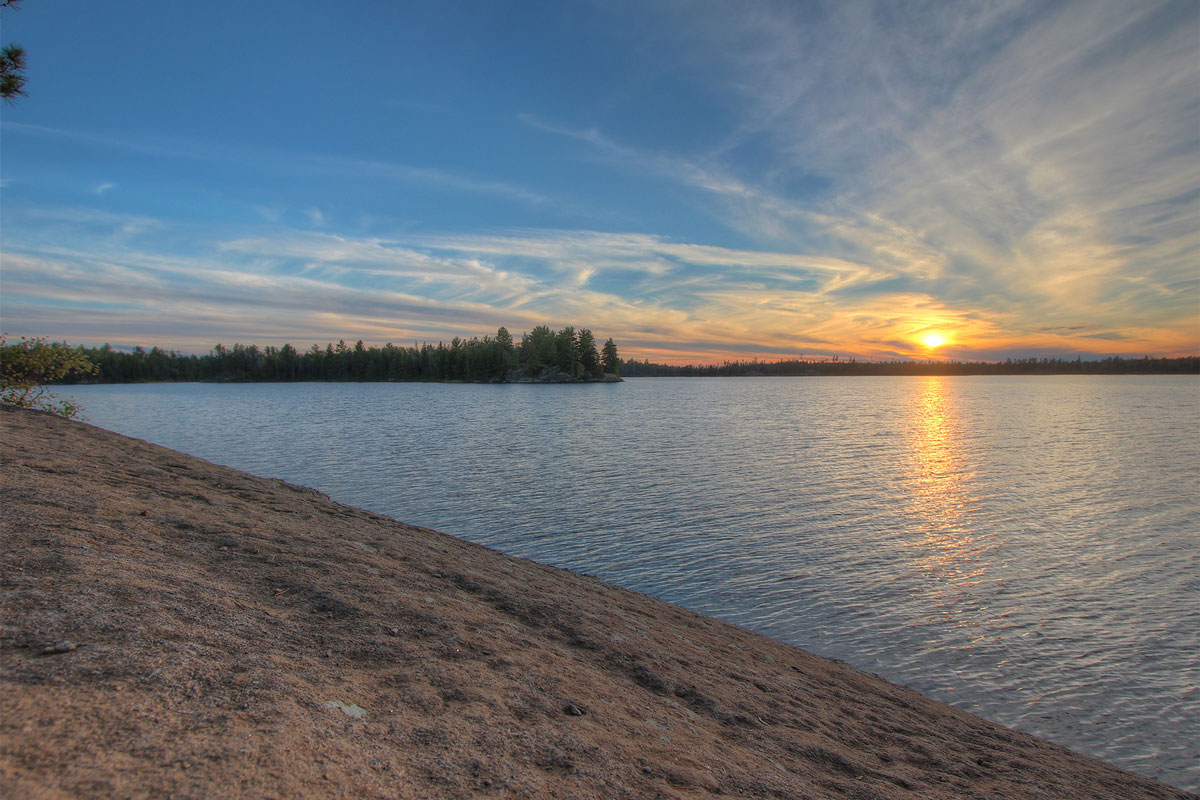 We spent three more nights in the BWCA, including one night on another great island. The perfect weather held all week. We had warm enough weather to swim every day and only a small amount of rain on the very last day. This is not typical of BWCA weather at this time of year (early September), but nobody in our group is complaining.
We spent three more nights in the BWCA, including one night on another great island. The perfect weather held all week. We had warm enough weather to swim every day and only a small amount of rain on the very last day. This is not typical of BWCA weather at this time of year (early September), but nobody in our group is complaining.
